DOWNLOAD PDF for NORTH POLE
SOPHIE CALLE "NORTH POLE"
Opening: 11 June 2010
Duration: 12 June to 15 September 2010
Born in 1953 in Paris, France
Lives and works in Malakoff (Paris), France
The French conceptual artist Sophie Calle is now considered as one of the most important artists of our time and was even recognized by Newsweek Magazine as one of the ten most important artists of contemporary art.
Since the late 1970’s she has been active as a photographer, combining text, image and conceptual installations. Her work amounts to a systematic laying bare of reality, whether it be her own or other people's, with a limited portion left to chance. Absence of others is a central theme in her work. However Calle’s own existence plays an important role in her works. The documentary manner in which she presents her work suggests a high degree of factualness.
Calle grapples with modes of perception and identification by portraying life in all its diversity, handing over all the problems and questions to the viewer – and thereby, closing the loop, back to life itself – to find the answers. Her works are distinguished by the directness of her formal approach, her narrative skill, the conceptual enrichment they undergo over the course of their creation, and their power to draw in the observer with all his or her abilities and experiences. The uncertainty expressed in her works is what makes them so compelling.
“She uses photography in unique ways – no one else works with photography / text in this outstandingly original way – and she is a constant source of inspiration to younger generations of conceptually working artists.” Hasselblad Foundation, 2011
CV
Sophie Calle gained an international reputation through participating extensively for nearly thirty years in major solo and group exhibitions and Biennials. She was invited to be the official representative of France at the 2007 Venice Biennial. Her project for "Venice Prenez soin de vous" was later exhibited again at the Bibliothèque National de France Richelieu, Paris, France (2008), at the Museum of Modern Art of Bahia, Salvador and SESC Pompeia, São Paulo, both Brazil (2009).
Calle's work has been exhibited worldwide in exhibitions that include: "Modus Vivendi', La Virreina Image Centre, Barcelona, Spain (2015), "For the Last and First Time", Musée d'art contemporain de Montréal, Montreal, Canada (2015), "Take Care of Yourself" at the Museo de Arte Contemporaneo de Monterrey, Mexico (2014), "Last Seen" at the Isabella Stewart Gardner Museum, Boston, MA, USA (2013), "For the Last and First Time" at the Hara Museum, Tokyo, Japan (2013), "Take Care of Yourself" at the Stavanger Kunstmuseum, Starvanger, at the Lillehammer Kunstmuseum, Lillehammer, Norway (both 2013) as well as at the Espoo Museum of Modern Art, Helsinki, Finland (2012).
Calle participated at the Shanghai Biennale, Shanghai, China (2012) and in the same year exhibited "Historias de pared" at the Museo de Arte Moderno, Medellin, Mexico.
Further solo exhibitions were "Earth: Art of changing World" at the Royal Academy of Arts, London, UK (2009) and "Souci" at the Musée des Beaux-Arts, Bruxelles, Belgium (2009), "Talking to Strangers" at the Whitechapel Gallery, London, UK (2009), travelling to the De Pont Foundation, Tilburg, Netherlands (2010) and to the Louisiana, Humblebaek, Denmark (2010).
A mid-career survey exhibition was showcased at the Ludwig Forum für Internationale Kunst, Aachen, Germany (2005), at the Irish Museum of Modern Art, Dublin, Ireland (2004), at the Martin-Gropius-Bau, Berlin, Germany (2004) and the Centre Pompidou, Paris, France (2003). In 2010 Sophie Calle received the Hasselblad Award.
SELECTED COLLECTIONS
Centre Pompidou, Paris, France; Guggenheim; Tate Gallery, London, UK; Los Angeles County Museum, L.A., USA; The Metropolitan Museum of Art, New York, USA, The Solomon R. Guggenheim Founding Collection
12.06 – 15.09.2010
Sophie Calle: "North Pole"
Solo presentation at ARNDT, Berlin
29.4. - 30.5.2010
“Changing The World”
Group exhibtion at ARNDT, Berlin
24.01. - 24.04.2009
Where and when? Berck/Lourdes / Où et quand? Berck/Lourdes
Solo exhibition at Arndt & Partner, Berlin
25.08. – 01.10.2005
Sophie Calle
"Works from 1983-2003"
Solo exhibition at Arndt & Partner, Zurich
10.09. – 23.10.2004
Sophie Calle
“The True Stories”
Solo exhibition at Arndt & Partner, Berlin
15.11. – 10.1.2004
“Silent Screams Difficult Dreams”
Group exhibition at Arndt & Partner, Berlin
9.3.- 20.4. 2002
Sophie Calle
“The Gotham Handbook”
Solo exhibition at Arndt & Partner, Berlin
29.05. - 10.07.1999
Sophie Calle
„De l‘obéissance – Über den Gehorsam“
Solo exhibition at Arndt & Partner, Berlin
21.02. - 11.04.1998
RESOLUTION
Group exhibtion at Arndt & Partner, Berlin
26.10. - 08.12.1996
Sophie Calle
„The Detachment - Die Entfernung“
Solo exhibition at Arndt & Partner, Berlin
25.06. - 30.07.1995
Sophie Calle
„Les Tombes“
Solo exhibition at Arndt & Partner, Berlin
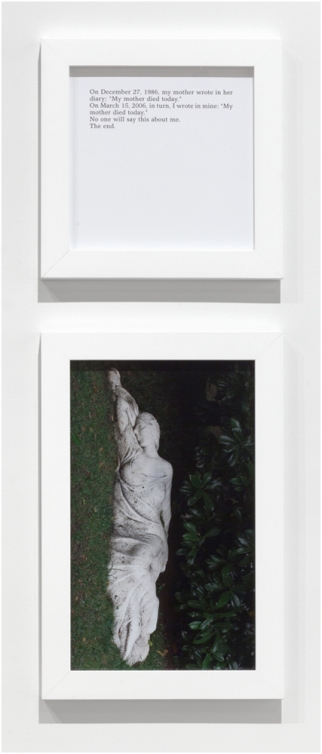 Sophie Calle, Today my mother died, from the series: Les Autobiographies , 2013, B/W photograph, text, frames, 50,5 x 50,5 cm (text); 76,5 x 50,5 cm (photograph), Number 3 from an edition of 5 + 1AP in English (5 + 1AP in French) # CALL0359
Sophie Calle, Today my mother died, from the series: Les Autobiographies , 2013, B/W photograph, text, frames, 50,5 x 50,5 cm (text); 76,5 x 50,5 cm (photograph), Number 3 from an edition of 5 + 1AP in English (5 + 1AP in French) # CALL0359 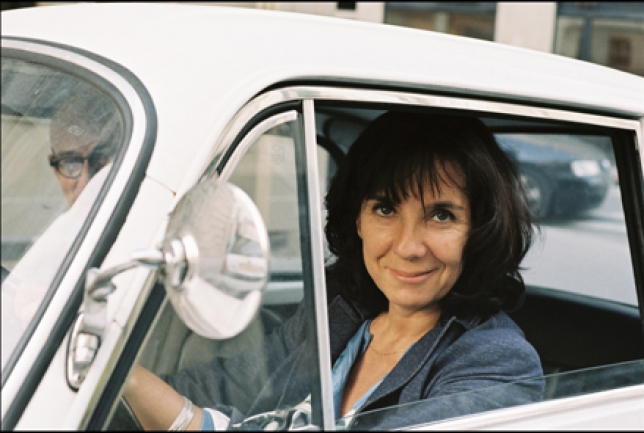 Sophie Calle, Portrait Sophie Calle, Photo: Yves Géant
Sophie Calle, Portrait Sophie Calle, Photo: Yves Géant
French artist SOPHIE CALLE from Paris has been selected as the 30th winner of the Hasselblad Foundation International Award in Photography. The prize, consisting of SEK 1,000,000 (approximately EUR 100,000) a diploma and a gold medal will be presented to Sophie Calle on Saturday 30 October 2010 at a ceremony at the Göteborg City Theatre. In conjunction with the ceremony an exhibit of the award winner's work, Sophie Calle - 2010 Hasselblad Award Winner will open at the Hasselblad Center at the Göteborg Museum of Art.
 ARNDT - "Migration" Group Show in Sydney / Matthias Arndt between Neo Rauch, Georg Baselitz, Nick Cave, George Condo an Geraldine Javier; Photo: Gerard Wood
ARNDT - "Migration" Group Show in Sydney / Matthias Arndt between Neo Rauch, Georg Baselitz, Nick Cave, George Condo an Geraldine Javier; Photo: Gerard Wood MIGRATION
First International Pop Up Show by ARNDT
March 27th to July 10th 2012
Please click here to watch a video of the "Migration" pop-up show in Sydney.
Please click here to see the list of works.
Migration, a major pop-up art show by Arndt launches in Sydney
In what will be one of the most exciting visual art developments in Sydney this year, Berlin gallerist, Matthias Arndt will launch his first pop-up art show.
Migration, will showcase museum quality works from many European and North American contemporary masters, such as Gilbert and George, Sophie Calle, Thomas Hirschhorn, Joseph Beuys and Bill Viola, as well as featuring some of the Asia Pacific region’s most exciting established and emerging artist.
Matthias Arndt said today, “The pop-up concept gives me the opportunity of bringing together a group of celebrated international artists in this vibrant art landscape in the Southern Hemisphere and forms a major part of my new initiative of working in Australia and the Asia Pacific Region.”
Arndt’s strategy is to bring exciting emerging and major established international and Asian art to Australia and in turn, show Asian Art in Europe at the Arndt Gallery in Berlin. With 25 years experience as an art expert and dealer in Europe, Matthias can now use his expertise in China, the booming South East Asian Market and Australia.
Migration will be produced by Matthias Arndt and his wife, Tiffany Wood, who has 20 years experience in the art world with Sotheby’s in London and New York, Marianne Boesky Gallery New York and Phillips de Pury & Company New York, London and Berlin.
Matthias Arndt, pioneered contemporary art in Berlin, New York, Zurich and Beijing, opening his first gallery in Berlin in 1994. He was the first West German to open a contemporary art gallery in East Berlin. “Berlin has established itself as one of the exiting art centers in the past decade, but the Asian region is fast becoming the power house of contemporary art,” he said.
Matthais Arndt sees the concept of the pop-up art show as a logical evolution of conventional gallery spaces.
“Galleries need to find a new way of doing things. The art market is now global and no single conventional gallery can represent artists successfully. I am not interested in building another permanent white cube art gallery. What does excite me is creating a new and unconventional platform in which to introduce international art of this quality to the Australian market. As I did in Berlin two decades ago,” he said.
Migration will feature work from 33 artists (full list below) and will be a selling show with works priced from $6000, to $500,000.
Migration will open parallel to the re-opening of the new Mordant Wing of the MCA at the end of March 2012, in a transformed office building within walking distance from the MCA. The architectural concept for the space is provided by CHOI ROPIHA FIGHERA.
Migration unites works of recognised artists from China, USA, Germany, Great Britain, Eastern Europe, Southeast Asia, Japan, South America, Africa and the Middle East. They are either emerging artists in their national scenes or already established and at the same time stars in the international art world through the Biennales, Museum-Retrospectives and the major art fairs.
There are plans for further pop-up shows throughout the regions together with focussed artist projects.
Location: - CASSydney, 9 Jenkins Street, Sydney NSW 2000
Open times: - March 27 to 31 - 10am to 6pm
April/May/June: Thursday, Friday and Saturday only - 11am to 5pm
(and by appointment)
Closing: - July 10
PARTICIPATING ARTISTS
Georg Baselitz
Joseph Beuys
Sophie Calle
Nick Cave
Joe Coleman
William Cordova
George Condo
Isa Genzken
Gilbert and George
FX Harsono
Anton Henning
Thomas Hirschhorn
Geraldine Javier
Ilya and Emilia Kabakov
Jitish Kallat
Rafael Lozano Hemmer
Robert Mapplethorpe
Vik Muniz
Eko Nugroho
Navil Ranwanchaikul
Neo Rauch
Julian Rosefeldt
Charles Sandison
Thomas Scheibitz
Nedko Solakov
Sui Jianguo
Agus Suwage
Christine Ay Tjoe
Natee Utarit
Bill Viola
Franz West
Entang Wiharso
Liu Xiaodong
Yang Jiechang
Qiu Zhi Jie
Zhu Jinshi
Thomas Zipp
ARNDT Statement:
Following, The Ephemeral, a curated group show held in the Berlin gallery, Migration is the first major pop-up-show to be held in Sydney, Australia by ARNDT. As part of the new initiative of working in Australia and the Asia Pacific Region, Matthias Arndt has brought together a group of celebrated international artists to this vibrant art landscape in the Southern Hemisphere.
Migration will open parallel to the re-opening of the new building of the MCA at the end of March 2012, in a transformed office building within walking distance from the MCA and world famous Sydney Harbour.
Migration is a significant part of Matthias Arndt’s strategy to bring exciting emerging and major established international and Asian art to Australia and in turn, showing Asian Art in Europe to feature in the Berlin Gallery programme. With 25 years experience as an art expert and dealer in Europe, Matthias can now use his expertise in China, the booming South East Asian Market and Australia. There are plans for Pop-Up shows throughout these new regions over the next years together with focussed artist projects.
Migration will be produced by Matthias Arndt and his wife, Tiffany Wood, who has 20 years experience in the art world with Sotheby’s in London and New York, Marianne Boesky Gallery New York and Phillips de Pury & Company New York, London and Berlin.
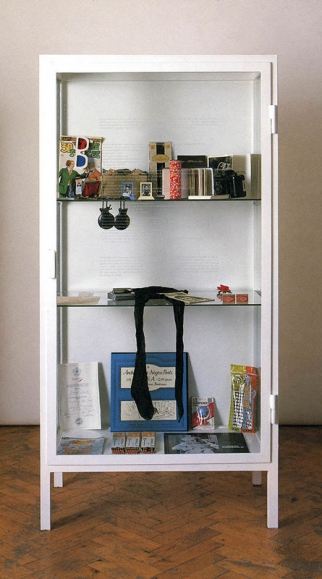 Sophie Calle, The Birthday Ceremony, 1986, showcase containing various personal objects, 170 x 78 x 40 cm | 66.93 x 30.71 x 15.75 in, unique
Sophie Calle, The Birthday Ceremony, 1986, showcase containing various personal objects, 170 x 78 x 40 cm | 66.93 x 30.71 x 15.75 in, unique
The Birthday Ceremony was Sophie Calle’s first major sculptural installation. Between the years 1980 to 1993 she invented and sustained a series of private and shared rituals around her birthday. These are now manifest as art, demonstrating how closely her life and her art are intertwined. Over this fourteen-year period, aside from the occasional year of disruption, Calle held an annual dinner party of her birthday. To each celebration she invited a group of friends and relatives, the precise number of invitees corresponding to the number of years of her age, with one additional, anonymous guest nominated by a chosen guest, in order to symbolise the unknown of her future. Calle initiated these dinner parties to ensure that her birthday was remembered each year. They were the most ambitious of a series of rituals Calle had invented to override an obsessive insecurity she experienced in early adulthood. The guests brought gifts, tokens of love and affection, and these Calle displayed in a glass fronted cabinet, as a constant reminder of this affection. At the end of the year the objects were boxed up and put away, their places taken by the gifts of another birthday dinner party.
The Birthday Ceremony brings together fifteen cabinets based on the medical design of the original, which had been given to Calle by her father. Thirteen individual cabinets and one pair, each containing the gifts of a single year. The gifts are displayed unwrapped and range from the banal to the bizarre. Encased behind glass they become objects of magnetic desire and frustration to the viewer, who cannot hold, cannot taste, cannot unwrap. On the glass of each cabinet is a list of items.
“On my birthday I always worry that people will forget me. In 1980, to relieve myself of this anxiety, I decided that every year, if possible on October 9, I would invite to dinner the exact number of people corresponding to my age. I did not use the presents received on these occasions. I kept them as tokens of affection. In 1993, at the age of forty, I put an end to this ritual.“
Sophie Calle
Opening: 11 June 2010
Duration: 12 June to 15 September 2010
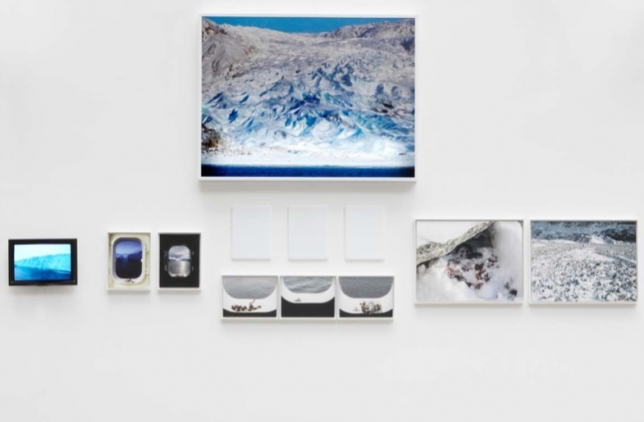 Sophie Calle, North Pole, 2009, Light box, sandblasted porcelain plaque, video, screen, color photograph, frame
Sophie Calle, North Pole, 2009, Light box, sandblasted porcelain plaque, video, screen, color photograph, frame Yesterday I buried my mother’s jewels on Northern Glacier. I was Lucky. A few meters further south and I would have landed on Starvation Glacier.
She had a dream. Go to the North Pole. It was a part of our life: One day she would go. She died two years ago having preserved her dream. I guess that’s why she never went.
I never had this dream. It was hers. But I was invited to go to the North Pole. And may be I went a little for her. To take her there.
In my suitcase : a photo, a necklace, a ring.
I chose a portrait of her in the snow. Winter holidays.
Her white and red Chanel necklace. I grew up with those pearls around her neck.
And her diamond ring. During the war my grandfather, running away from the Germans to hide in the mountains of Grenoble, afraid a building he owned would be seized, exchanged it for a diamond ring. Not a good deal. My grandmother did not talk to him for a year.
So I waited to reach the most northern place of this trip, where I could go ashore with my mother.
Laurie, my roomate on the boat, suggested that, if the weather did not allow us to do so, I still could flush the ring down the toilet. Actually, it is a thought my mother would have loved. During a few minutes I imagine her laughing to tears to this idea. But the weather was good.
I chose a beautiful stone in the center of the beach
I buried the portrait, the necklace, the diamond. Cried a little. Took a photo. Martha sang a verse of Marylin Monroe – my mother’s other passion along with the North Pole - diamonds are a girl’s best friend.
Now, my mother has gone to the North Pole.
I wonder if her glacier will advance or retreat, if the climate changes will carry her to the sea to be taken north by the West Greenland current, or retreat up the valley towards the ice cap, or if she will stay on the beach as a marker in time where the glacier was in the holocene period.
And maybe in thousands of years, specialists in glaciology will find her ring and discuss endlessly this flash of diamond in Inuit culture.
Or if a treasure hunter or beachcomber will discover it and exchange it for a house in the mountains of Grenoble.
By Sophie Calle
24.01. - 24.04.2009
Sophie Calle
"Where and when? Berck/Lourdes / Où et quand? Berck/Lourdes"
Solo exhibition at Arndt & Partner, Berlin
Tell Me Quando, Quando, Quando …
In her artistic explorations of perception, memory, and the search for identity, Sophie Calle doesn’t merely trace others’ footsteps; she includes her own life as well. The ritualistic staging of situations is a primary motif in all her work. In an approach akin to journalistic research, the data and evidence she collects are presented in texts reminiscent of log entries and quasi-documentary photographs. On a formal level, she works with the juxtaposition of images and text; on the content level, with the interweaving of reality and fiction.
The exhibition of Calle’s new works Où et Quand? Berck and Où et Quand? Lourdes includes photographs, texts and videos as well as various artifacts and neon lettering with the names of the two eponymous French towns. At the outset of her project, Calle approached the fortune-teller Maud Kristen and asked her where she should go and when. Kristen hesitated at first but then agreed to lay down travel itineraries for Calle after consulting the cards. The first destination she specified was the seaside resort of Berck in northern France and the second was Lourdes, the famous pilgrimage site. While traveling, Calle regularly checked in with Kristen by telephone to receive new instructions. The various texts describe their sessions in Paris and provide detailed accounts of each trip, including railway schedules and routes; and they record the artist’s experiences and thoughts along the way. They are supplemented by photographs, souvenirs and video recordings of conversations with people she encountered on her travels.
By submitting to the instructions of someone else – in this case, a complete stranger – the artist links her fate to that of another human being and seems to – in a sense – hand her life over to that person. Thus the project touches on questions of dominance and subordination, authority and obedience, self determination and other-directedness. Calle describes her motivation as follows: “I proposed that Maud Kristen predict my future so I could face it and reduce its momentum somewhat.” It is the same desire that drives people to read their horoscope every day or turn to astrology shows on TV for counsel – the desire to know what lies ahead and thus feel they have some control over their own life.
Sophie Calle’s works are statements both on human nature and on the nature of art, in which she playfully challenges and shifts the boundaries between the two. Her works are at once referential and abstract, referring to specific events and experiences and pointing beyond them at the same time. By exploring life in all its facets and continually juggling antitheses such as documentation and invention, fact and fiction, reality and show, she sets out to provoke reactions and communication.
The artist grapples with methods of perception and identification by portraying life in all its diversity, handing over all the problems and questions to the viewer – and thereby, closing the loop, back to life itself – to find the answers. Calle’s works are distinguished by the directness of her formal approach, her narrative skill, the conceptual enrichment they undergo over the course of their creation, and their power to draw in the observer with all his or her abilities and experiences. The uncertainty expressed in her works is what makes them so compelling. Uncertainty is almost always unsettling. It is inefficient, unproductive, and sometimes even dangerous. Hybrid in nature, these works resist classification, like life itself. Sophie Calle wouldn’t have it any other way.
Text: Barbara Heinrich
25.08. – 01.10.2005
Sophie Calle: Works from 1983-2003
Solo exhibition at Arndt & Partner, Zurich
10.09. – 23.10.2004
Sophie Calle “The True Stories”
Solo exhibition at Arndt & Partner, Berlin
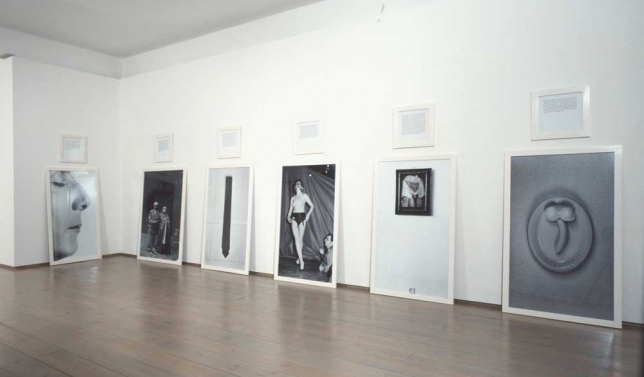 Sophie Calle “The True Stories”, installation view at Arndt & Partner, Berlin), 2004, Photo: Bernd Borchardt
Sophie Calle “The True Stories”, installation view at Arndt & Partner, Berlin), 2004, Photo: Bernd Borchardt PRESS RELEASE
We are delighted to announce our fifth solo exhibition with Sophie Calle. The show will present the "True Stories" (or "Autobiographies"), offering the first overall view of the renowned series, that Sophie Calle started in 1988 with "The Portrait", and that currently encompasses thirty individual works.
Each "Autobiography" consists of two elements, combining a text with a black/white or colour photography. Sophie Calle takes us through various phases of her life and work: her childhood and youth in Paris; the stories about her husband, the arguments and rituals they share and continue to share even after their break up and divorce; the famous "Sleepless Night" Sophie Calle spent on top of the Eiffel Tower, asking visitors to tell her stories that would prevent her from falling asleep…
More than any other series, the "Autobiographies" reveal how Sophie Calle's life and work form a unified whole, an uncommon congruity which both fascinates and irritates her public. The French artist's work inhabits a peculiar space between fact and fiction. She crosses private boundaries to explore the hidden codes which shape our interaction; meanwhile, she exploits public spaces by investing them with a sense of intimacy, such Paris-Roissy airport, where she solemnly stages her own wedding dream, wearing a beautiful red dress ("Dream Wedding", 2001). It is precisely the combination of text and image, that leads us to the very heart of her work. The French artist calls herself a "narrative artist", emphasizing that the stories and their content, the preliminary research, the form chosen, and the final works presented in the exhibition, are all equally important to her.
The gallery exhibition is accompanied by the first German publication of the "Autobiographies", likewise entitled "True Stories", and published by Prestel (ISBN 3-7913-3262-7).
9.3.- 20.4. 2002
Sophie Calle “The Gotham Handbook”
Solo exhibition at Arndt & Partner, Berlin
“Gotham Handbook” is a reflection of the complex relationship between Sophie Calle and the New York novelist Paul Auster. In his 1992 novel Leviathan, he based the character of Maria upon Sophie Calle‘s life. Adopting some of the idiosyncracies which Auster had invented for the Maria character, Sophie Calle in return asked the author to invent a fictive character which she would attempt to resemble. Since Auster did not wish to take personal responsibility for what might happen to her, he chose instead to write out „Personal Instructions for S.C. on How to Improve Life in New York City (Because she asked...)“. Following Auster‘s instructions, Calle picked one spot in the city as her own – a telephone box – where she would spend an hour every day, watching everything that happened to it, keeping track of everyone who passed by or stopped. For one week, Calle kept a detailed written and photographic diary of her efforts: counting up the number of smiles she gave and received, the number of people who used her decorated public phone booth, her meaningless conversations with strangers and the food and cigarettes she distributed to people who looked hungry. The result is “Gotham Handbook” – a series of seven framed panels containing texts and photos of every day of the week – reflecting her desire for ritualistic fulfilment and storytelling.
By mingling fact with fiction, “Gotham Handbook” explores the range and possibilities of human interaction. Demanding the participation of her audience – whether it be the New York citizen or the beholder of "Gotham Handbook", Auster’s directives allow Sophie Calle to question core issues relevant to artistic production and experience.
Sophie Calle, born in Paris in 1953, lives in Malakoff (Paris) and in New York. Her work enjoys widespread international success and was exhibited in institutions, such as the Centre Georges Pompidou, Paris, and the Museum of Modern Art, New York. Furthermore, this year she will be awarded with the international "Spectrum" prize for photography of the Stiftung Niedersachsen.
29.05. - 10.07.1999
Sophie Calle: „De l‘obéissance – Über den Gehorsam“
Solo exhibition at Arndt & Partner, Berlin
26.10. - 08.12.1996
Sophie Calle: „The Detachment - Die Entfernung“
Solo exhibition at Arndt & Partner, Berlin
DIE ENTFERNUNG – THE DETACHMENT
To record this process, I visited places from which symbols of GDR history have been effaced. I asked passers-by and residents to describe the objects that once filled these empty spaces. I photographed their absence and replaced the missing monuments with their memories.« (Sophie Calle)
Succinctly and precisely, the artist describes the concept behind her installation »Die Entfernung – The Detachment«, in which she graphically demonstrates and documents how the reunited city of Berlin comes to terms with its own history, and at the same time raises basic questions about our own existence – for instance how and to what degree we can recall the past, and how memory and personal identity define each other. Such fundamental questions have defined Sophie Calle’s art since its beginnings in the early eighties. The initial focus of her work was her own sense of personal identity, for on returning to Paris after several years of living abroad, she had to rediscover her bearings in the now unfamiliar city of her youth. A candidly voyeuristic project helped to refamiliarise her with what had become an alien environment: camera and notebook in hand, Calle secretly followed a complete stranger through the city streets, construing from her observations everyday stories of Parisian life ambiguously located between fiction and reality. Such shifts between realistic documentation and fictitious constructs also characterise her later work. In »Venetian Suite« (1980), for instance, she pursues a fleeting acquaintance toVenice, observing his movements like a private detective;in »The Hotel« (1981) she gets a job as achambermaid in a Venetian hotel and rummagesthrough the guests’ suitcases, looking for clues tounfamiliar lives. In another project, »The Shadow«(1981), she has herself followed by a detective engagedby her own mother and afterwards comparesnotes with him – but only after having him shadowedin his turn by a friend of hers as he carries outhis assignment. These projects demonstrate how weattempt to shed light on our own lives by compulsivelycomparing them with other, unfamiliar biographies.Such confrontations with the way othersare – for instance with a Russian on the Trans-Siberian Express (»Anatoli«, 1984) – sharpen oursense of the way we ourselves are. Yet it is also clearthat any amount of information on other people’slives does not bring us closer to experiencing theirunique individuality. On the contrary, the moreinformation we collect and the closer we believe weare to the individual in question, the more shadowyand intangible the latter’s personality is rendered byour often contradictory observations and descriptions(»The Man with the Address Book«, 1983).instance, she pursues a fleeting acquaintance toVenice, observing his movements like a private detective;in »The Hotel« (1981) she gets a job as achambermaid in a Venetian hotel and rummagesthrough the guests’ suitcases, looking for clues tounfamiliar lives. In another project, »The Shadow«(1981), she has herself followed by a detective engagedby her own mother and afterwards comparesnotes with him – but only after having him shadowedin his turn by a friend of hers as he carries outhis assignment. These projects demonstrate how weattempt to shed light on our own lives by compulsivelycomparing them with other, unfamiliar biographies.Such confrontations with the way othersare – for instance with a Russian on the Trans-Siberian Express (»Anatoli«, 1984) – sharpen oursense of the way we ourselves are. Yet it is also clearthat any amount of information on other people’slives does not bring us closer to experiencing theirunique individuality. On the contrary, the moreinformation we collect and the closer we believe weare to the individual in question, the more shadowyand intangible the latter’s personality is rendered byour often contradictory observations and descriptions(»The Man with the Address Book«, 1983).This is also true of »Die Entfernung – The Detachment«. The passers-by’s recollections cannot fill out the empty space in the photograph where the monument once stood, or, for instance, where the GDR state emblem used to hang on the Palace of the Republic (see photograph above). Their recollections are in part so contradictory that the reader begins to doubt whether they are referring to one and the same monument – it has also been »detached« from people’s memories. At the same time, the highly emotional texts testify to the enduring presence in human consciousness of what has disappeared from their world. Sophie Calle’s installation opens our eyes to the complex way in which we perceive reality – and to the equally complex way in which history and the present are interwoven. In this respect, »Die Entfernung – The Detachment« is one of the most revealing artworks on the history of inter-German relations and its contemporary afterimage. Text: Andreas Kaernbach
25.06. - 30.07.1995
Sophie Calle: „Les Tombes“
Solo exhibition at Arndt & Partner, Berlin